Understand and wear coloured Gemstones in Jewellery
COLOURED STONES
Welcome to the world of coloured stones, where colour only adds more value to a gemstone. With a clear understanding of diamonds, their properties and grading standards you are now ready to try your hand at not only one species of gemstones but numerous other varieties. Throughout history, gemstones have been used for their magical powers to cure its wearers and protect them from all sorts of forces. Today in modern India, astrologers, palmistry and fortune tellers still practice this art and promote wearing gems for the energies they tend to release. Coloured gems are essentially any gem quality material that is not a diamond. They can be formed from any element from the periodic table and come in a wide array of colours from light blues to the likes of the variety Aquamarine to the deep reds of the Spinel. Coloured gemstones form naturally in different shapes and crystal systems which sometimes tend to affect the cut of the stone. Classified under two major categories Organic and Inorganic (reminded you of school chemistry classes?), gemstones trace their origins to different environments some mined from the earth or even the oceans. Organic gems are gems that were once living organisms or have been produced by a living organism. Some of which are Pearls (Moti), Amber (Kaharua), Ivory, Coral (Moonga). On the other side are the inorganic gems that have a standard chemical composition and are derived from non-living organisms. Emeralds (Panna), Spinels, Sapphires (Neelam) and Hessonite Garnet (Gomed) are some examples.
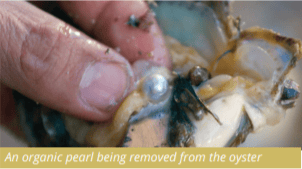

Coloured gems incorporate diamonds and thus have many similarities in terms of cut, clarity and carat weight. Both inorganic and organic gems must be beautiful to be considered gems. With a little cleaning and polishing from their rough state, their true characteristics are brought out and they are transformed into valuable gems that can command very high prices. Rarity is another aspect you will encounter quite often when it comes to gems. Just like diamonds, there are many varieties of gems so rare that most shoppers have never heard of them. This, in turn, increases the price of these gems because of the difficulty to find them. Red Beryl, a variety of the Beryl species, the same species under which Emeralds fall is so rare that it is generally seen in auction houses, private jewellery collections and in museum pieces. The more you learn about gems you will also see that they are grouped into different categories based on the stones transparency, phenomenon and even colour.
RUBY, EMERALD, SAPPHIRE AND PEARLS
When it comes to music you have most likely heard of legends like Beethoven in the western world or Asha Bhosle from the Indian world. These are icons in the music industry. In the same way Ruby, Emerald and Sapphires are the big 3 of the gemstone industry. Their prominence world over has led to the demand for these stones to remain quite high over centuries.
EMERALD
Emeralds known for their lush green colour is the birthstone for the month of May. It is part of the Beryl species, the same species that houses Aquamarines, Morganite, Heliodor beryl & Red beryl to name a few. Emeralds get its name from Greek origins “smaragdos” via old French “esmeralde” which translates to the colour green. Believed to be a stone for wealth and status, the oldest gems date back to the 3500 BC where emeralds were found in a mine called the Cleopatra mines. Emeralds were considered the gems of royalty and can be seen in many royal jewels in India, some of which were taken away from our country years ago. Emeralds form in the hexagonal crystal structure because of its long and thin nature, used to retain maximum weight in the stone. This has brought about the emerald cut. This emerald cut also helps in maintaining the tone of the stone and can make the stones of a light colour look darker or perhaps lighter which in turn helps improve the colour and hence the saleability of the stone. Emeralds are made of Beryllium aluminium silicates and oxides and as you have already been briefed about trace elements, the trace elements in the beryl that give emeralds their iconic bluish green colour are chromium or vanadium. The colour of an emerald by definition must have a bluish tinge to it or else it falls under the variety – green beryl, which is not as valuable as emeralds. Mined in regions of South America like Colombia and Brazil and regions of Africa like Zimbabwe and Zambia, emeralds have harsh mining conditions and generally have violence associated with them. The geological environments in which emeralds are found are schists and shales, which tends to appear in the inclusions that are present in the gemstone. Columbian emeralds known for their unmatchable colour have gained popularity amongst traders and are sometimes used to falsely represent stones from different origins.
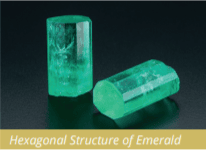
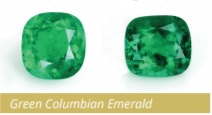
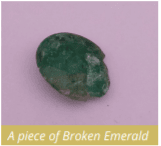
Stones that are claimed to be from specific regions must be accompanied with origin reports. Synthesised emeralds are available on the market and share the same hydrothermal growth conditions like their natural counterpart. This is the reason why synthetic emeralds tend to have a number of inclusions within just like natural emeralds. Emeralds are a precious gemstone and should be cared for in a very special way. They can damage easily because of their inclusions and constant exposure to ultrasonic washers can remove filling. Your clients should be careful because fractures can open in the stone making stones look very different after. As a professional in this industry, you must be able to explain to your shoppers that their emerald jewellery must be cared for. By storing in individual packaging so that stones do not rub against harder stones or metals, which could thereby damage their precious stones should be their concern.
RUBY
Ruby is another one of the oldest gemstones known to man. It is also thought to have been around during the times of the cavemen, although they were unaware of the value of the stone at the time. In Sanskrit, Ruby is known to be the king of all gems and is called “Ratnaraj” which captures the stone’s true value perfectly. Ruby is part of the corundum species, which is made up of aluminium silicates and gets its colour from the trace element chromium. Chromium is what gives the gem its orangey red to purplish red colour that cannot be matched by any other colour stone. Spinel, a gemstone, is one stone, which in the past has been wrongly identified as being rubies. The Timur Ruby on the queen’s jewels of England is actually a spinel, a gemstone which falls under the red colour category but worlds apart from the ruby. The birthstone for the month of July, rubies are a variety of the Corundum species. This species is a mother to the Sapphires, Yellow Sapphires, Green Sapphires and Colourless Sapphires to name some. The most exceptional Rubies have been found in Burma, which is now known as Myanmar. Mong Shu rubies are some of which have altered the history for these gems, gaining so much popularity that today these stones sell at premiums because of their origin and fine colour.

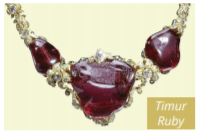

Rubies have also been found in states in the mineral-rich country of Africa, Madagascar being one of them. Srilanka is also known for the production of fine quality corundums in every variety. Pigeon blood rubies is a trade term which is used to describe the deep red hues seen in these gems which also tend to command high prices because of the pure red. With corundum’s hardness on the mohs scale at 9, these stones have exceptional hardness and are quite durable. When used in jewellery they do not scratch easily although they must still be cared for because of their value. Treated rubies are a common sight in jewellery these days and are filled with fillers that improve the clarity and colour of the gemstone. Although a common feature, it should be disclosed to the customer as it is not a treatment that is accepted by the industry. Their popularity and hardness have created a stir in the industry and have then been synthetically reproduced by man to cater to the needs of various industries. From the 1800’s the Rubies have been recreated by the Flame and Flux methods, which today can be easily distinguished from their natural counterparts.
SAPPHIRE
Ruby’s cousin in the variety, Sapphires have similar characteristics, although their colour range falls on two sides of the same coin. Sapphires are known for their cool blues whereas rubies for its warm reds. The name sapphire, although, is used as a suffix in many of the varieties in the same species. It describes the blue variety when used alone. For example – Pink Sapphire, White Sapphire, etc. Back in the day, any blue gemstone was considered a Hyacinth, getting its name after the flower. Slowly the colour of sapphire and properties became easily distinguishable from other simulants and Sapphire gained popularity on its own. The stone was thought to clear the minds of people and rid them of fevers. Today, sapphires are thought to be a very powerful stone, which is why the Hindu faith believes that when you wear a sapphire it must align correctly with your stars. Just like all other famous stones, Sapphires have received its own trade term – the Cornflower blue. This refers to the fluorescent and velvety blue seen in sapphires from Kashmir.
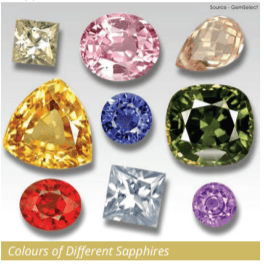
Trace element cobalt gives the sapphires their much-demanded blue. Because of the similar chemical composition to that of rubies they are both found in similar geographic belts. From Madagascar to Sri Lanka, the international demand for the cool blue colours has brought sapphires its widespread popularity. Today, these stones are replicated in the same way as rubies. Although, a higher percentage is seen as natural but treated stones. Treated to improve colour and clarity, sapphires are commonly heated which also, in turn, alters the appearance of its inclusions. When it comes to selling these beauties, do remember to relate rarity with other factors like colour, clarity and carat weight. As a KPP you will now be able to breeze through questions on gemstones and jewellery without any hesitation.
PEARL
Pearls are one of the man’s most favourite gemstones. A common feature in jewellery, this organic marvel is made of calcium carbonate and forms in oysters deep under the ocean. Oysters, just like other shellfish, are living organisms that create these highly sought after pearls with a phenomenon that’s impossible to replicate – orient. Orient – This is a form of iridescence found on the nacre of pearls. The orient is usually cream, silver or black. As a KPP you should understand the formation of a pearl and its cultured counterparts, which is what we will cover in this section. Pearls are divided into two – Natural and Cultured pearls. As the name suggests, the latter has human intervention involved in the development process. Both are essentially created in the same way, where a microscopic grain or an irritant gets stuck within the oyster after which the animal coats the irritant with a substance called nacre to ease itself of the constant irritation. Layer after layer the irritant transforms into a pearl, which is extracted from the oyster. The region of Basra in Iran was known to produce the best quality and colour in natural pearls that were completely unaltered by humans. Today these stones command the highest value in the gemstone market with relation to pearls. In cultured pearls, on the other hand, the oysters are opened, a foreign substance (generally a piece of shell) is placed into the oyster, which is then removed once it naturally layers the substance with nacre. When it has reached the right size, these pearls are harvested. In this way, man has been able to achieve standardised sizes and colour in pearls.
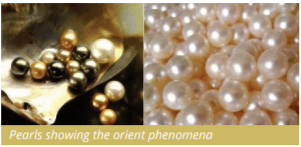
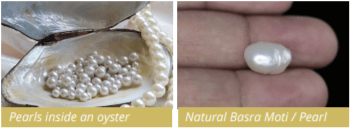
Cultured pearls come in 3 primary varieties based on the oyster they are grown in. Pinctada maxima are known to produce the golden south sea pearls that can be seen in strings around the necks of women everywhere. These pearls have gained a place for themselves in the market for their warm golden hues. Pinctada margaritifera, another variety forms the black pearls called Tahitian pearls. These pearls are generally seen as centre stones in rings and pendants. Their powerful colour gives them the importance they need as centre stones. Akoya pearls are the smaller ones that form in the Pinctada fucata oysters. These smaller pearls are perfect to complement other gemstones as strings in necklaces etc.
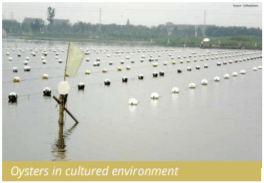
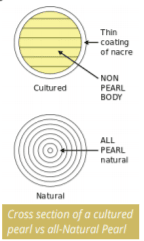
THE NAVRATNA
Navratna translates to “nine gems” and is very symbolic in the Hindu belief. With the nine gems namely Diamond, Yellow Sapphire , Pearl, Hessonite Garnet, Sapphire, Cats Eye Chrysoberyl, Ruby, Coral and Emerald each stone is associated with the nine planets. These “nav-ratna” or nine gems are meant to harness the powers of each planet thereby giving the wearer happiness and peace of mind. This talisman is said to bring numerous positive changes to its wearer
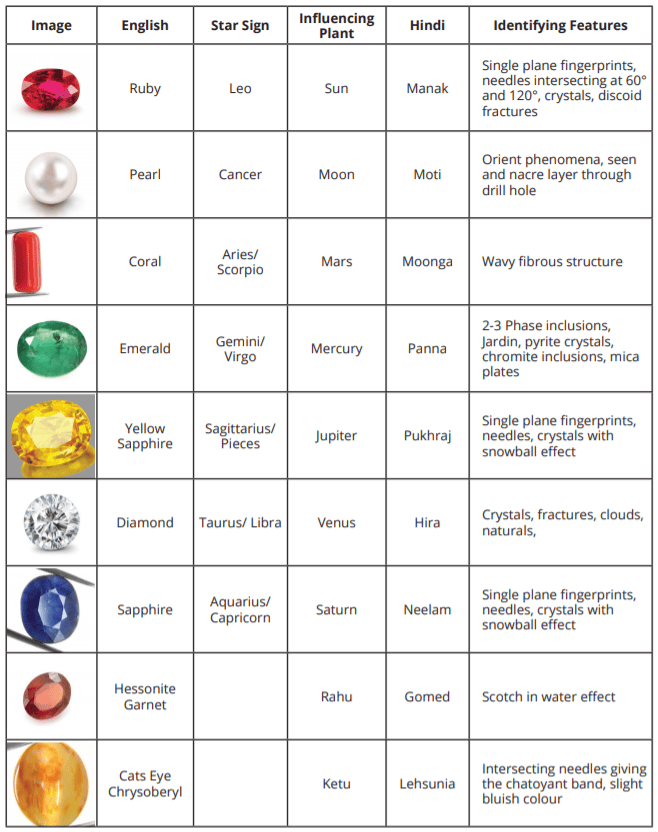
Understand and wear coloured Gemstones in Jewellery FAQ:
- What are emeralds known for?
Emeralds known for their lush green colour are the birthstone for the month of May. It is part of the Beryl species, the same species that houses Aquamarines, Morganite, Heliodor beryl & Red beryl to name a few.
2. Do sapphires increase in value?
The sapphire, however, is of the highest quality and a very rare gemstone to come by. Getting a well-cut, high-quality carat sapphire would cost more than other gemstones since a quality sapphire is made to the very best value and is a very rare gemstone which makes the demand high and increases the price.
Understand and wear coloured Gemstones in Jewellery by Team KuberBox

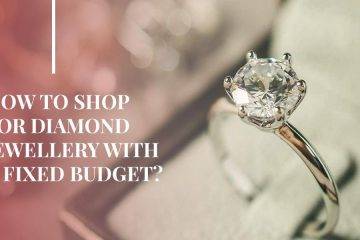
1 Comment
Sal · January 6, 2022 at 6:32 pm
Nicely explained.
Thank you